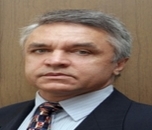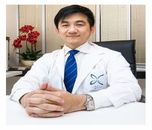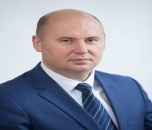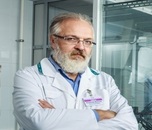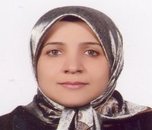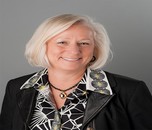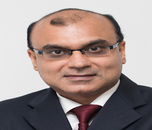Theme: Explore and Exploit the Novel Techniques to Repair, Restore and Regenerate
Tissue Science Congress 2017


Conference Series invites all the participants from all over the world to attend “8th International Conference on Tissue Science and Regenerative Medicine” during September 11-12, 2017 in Singapore City, Singapore which includes prompt keynote presentations, Oral talks, Poster presentations and Exhibitions.
Tissue Science and Regenerative Medicine 2017 on behalf of its organizing Committee welcomes all the stem cell technologists, researchers, industrialists, young scientists as well as student and corporate delegates to participate and to have a great experience. The theme of the conference is based on “Explore and Exploit the Novel Techniques to Repair, Restore and Regenerate”. International symposiums, B2B meetings, international workshops will also be organized to discuss the specific topics in the field of Stem cell technology during the conference. We also welcome International Exhibitions form corporate sectors to showcase the recent advancements in the tools and techniques.
Why to attend???
With members from around the world focused on learning about Tissue Science and Regenerative Medicine; this is your best opportunity to reach the largest assemblage of participants from the Tissue Science and Regenerative Medicine community. Conduct presentations, distribute information, meet with current and potential scientists, make a splash with new drug developments, and receive name recognition at this 2-day event. World-renowned speakers, the most recent techniques, developments, and the newest updates in Tissue Science and Regenerative Medicine are hallmarks of this conference.
Target Audience:
- Tissue Science and Regenerative Medicine Researchers
- Tissue Science and Regenerative Medicine Faculty
- Medical Colleges
- Tissue Science and Regenerative Medicine Associations and Societies
- Business Entrepreneurs
- Training Institutes
- Global Tissue Science and Regenerative Medicine Companies
- Tissue Science and Regenerative Medicine Investors
- Exhibitors and Sponsors
Conference Highlights
- Tissue Engineering: Progress and Prospects
- Tissue Repair and Regeneration
- Stem Cells: The Tissue Engineering Approach
- Regenerative Medicine
- Stem Cell Transplantation
- Scaffolds and Biomaterials for Tissue Engineering
- Translational Medicine
- Stem Cell Therapy
- Cell Based Therapy
- Gene Therapy
- Bone and Cartilage Tissue Engineering
- Rejuvenation- Fight Aging
- Cell and Organ Regeneration
- Regenerative Medicine Market
The 8th International Conference on Tissue Science & Regenerative Medicine which is going to be held during September 11-12, 2017 at Singapore will bring together world-class personalities working on stem cells, tissue engineering and regenerative medicine to discuss materials-related strategies for disease remediation and tissue repair.
Tissue engineering is the use of a combination of cells, engineering and materials methods, and suitable biochemical and physicochemical factors to improve or replace biological tissues. Tissue engineering involves the use of a scaffold for the formation of new viable tissue for a medical purpose. While it was once categorized as a sub-field of biomaterials, having grown in scope and importance it can be considered as a field in its own. While most definitions of tissue engineering cover a broad range of applications, in practice the term is closely associated with applications that repair or replace portions of or whole tissues (i.e., bone, cartilage, blood vessels, bladder, skin, muscle etc.). Often, the tissues involved require certain mechanical and structural properties for proper functioning. The term has also been applied to efforts to perform specific biochemical functions using cells within an artificially-created support system (e.g. an artificial pancreas, or a bio artificial liver). The term regenerative medicine is often used synonymously with tissue engineering, although those involved in regenerative medicine place more emphasis on the use of stem cells or progenitor cells to produce tissues.
Related Conferences
8th International Conference on Tissue Science and Regenerative Medicine September 11-12, 2017 Singapore; 7th International Conference on Tissue Engineering & Regenerative Medicine October 02-04, 2017 Barcelona, Spain; Annual Summit on Cell Signaling and Cancer Therapy September 27-28, 2017 Chicago, Illinois, USA; Annual Summit on Cell Therapy and Molecular Medicine September 27-28, 2017 Chicago, Illinois, USA; 9th Annual Conference on Stem Cell and Regenerative Medicine Sep 25-26, 2017 Berlin, Germany; 6th International Conference on Tissue Engineering and Regenerative Medicine August 23-24 , 2017 San Francisco, California ,USA; 3rd International Conference & Exhibition on Tissue Preservation and Biobanking August 23-24, 2017 San Francisco, California, USA; 2nd World Congress on Molecular Genetics and Gene Therapy July 03-05, 2017 Thailand, Bangkok; 3rd World Congress on Human Genetics & Genetic Disorders October 20-21, 2017 Toronto, Canada; 6th International Conference and Exhibition on Cell and Gene Therapy Mar 27-28, 2017 Madrid, Spain; 8th World Congress and Expo on Cell & Stem Cell Research March 20-22, 2017 Orlando, Florida, USA; 10th World Congress on Stem Cell and Biobanking October 23-24, 2017 Osaka, Japan.
Biomaterials and Bioengineering
Research in the Biomaterials and Tissue Engineering track involves the investigation and development of materials and structures to improve the quality of life for patients. These materials—which may be synthetic, natural, or cell-based—are intended to assist in the diagnosis of pathology or injury, monitor condition, and improve or restore normal physiological function in the human body. Biomaterials science is the study of materials and their interaction with biological environments, and tissue engineering is the application of engineering and life sciences toward development of a biomaterial to restore, maintain and improve tissue function. Researches in this inter- and multidisciplinary field involves collaborations among engineers, surgeons, materials scientists, biological scientists, chemists, dentists, and veterinarians in academics, industry, government and the clinic.
Related Conferences
8th International Conference on Tissue Science and Regenerative Medicine September 11-12, 2017 Singapore; Tumor & Cancer Immunology and Immunotherapy July 17-19, 2017 Chicago, USA; 6th International Conference on Cell and Gene Therapy Mar 2-3, 2017 Madrid, Spain; 9th Annual Conference on Stem Cell and Regenerative Medicine Sep 05-06, 2017 Paris, France; International Conference on Restorative & Alternative Medicine October 24-25, 2016 Chicago, Illinois, USA; 3rd International Conference & Exhibition on Tissue Preservation and Biobanking August 23-24, 2017 San Francisco, USA; 2nd Annual Conference and Expo on Biomaterials March 27-28, 2017 Madrid, Spain; International Conference on Cell Signalling and Cancer Therapy Aug 20-22, 2017 Paris, France; 7th International Conference on Tissue Engineering and Regenerative Medicine October 02-04, 2017 Barcelona, Spain.
Regenerative medicine is the branch of medicine that develops methods to regrow, repair or replace damaged or diseased cells, organs or tissues. Regenerative medicine includes the generation and use of therapeutic stem cells, tissue engineering and the production of artificial organs. Regenerative medicine seeks to replace tissue or organs that have been damaged by disease, trauma, or congenital issues, vs. the current clinical strategy that focuses primarily on treating the symptoms. The tools used to realize these outcomes are tissue engineering, cellular therapies, and medical devices and artificial organs.
Related Conferences
7th Annual Conference on Stem Cell and Regenerative Medicine Aug 4-5, 2016, Manchester, UK; 2nd International Conference on Antibodies July 14-15, 2016 Philadelphia, USA; 2nd International Conference on Innate Immunity July 21-22, 2016 Berlin, Germany; International Conference on Cancer Immunology July 28-30, 2016 Melbourne, Australia; 5th International Conference on Immunology October 24-26, 2016 Chicago, USA; Cancer Vaccines: Targeting Cancer Genes for Immunotherapy, Mar 6–10 2016, Whistler, Canada; Systems Immunology: From Molecular Networks to Human Biology, Jan 10–14 2016, Big Sky, USA; Novel Immunotherapeutic Summit, Jan 25–26 2016, San Diego, USA; Stromal Cells in Immunity, Feb 7–11 2016, Keystone, USA; 26th European Congress of Clinical Microbiology, April 9–12 2016, Istanbul, Turkey.
Stem cells have the remarkable potential to develop into many different cell types in the body during early life and growth. In addition, in many tissues they serve as a sort of internal repair system, dividing essentially without limit to replenish other cells as long as the person or animal is still alive. When a stem cell divides, each new cell has the potential either to remain a stem cell or become another type of cell with a more specialized function, such as a muscle cell, a red blood cell, or a brain cell. Stem cells are distinguished from other cell types by two important characteristics. First, they are unspecialized cells capable of renewing themselves through cell division, sometimes after long periods of inactivity. Second, under certain physiologic or experimental conditions, they can be induced to become tissue- or organ-specific cells with special functions. In some organs, such as the gut and bone marrow, stem cells regularly divide to repair and replace worn out or damaged tissues. In other organs, however, such as the pancreas and the heart, stem cells only divide under special conditions.
Related Conferences
8th International Conference on Tissue Science and Regenerative Medicine September 11-12, 2017 Singapore; 7th International Conference on Tissue Engineering & Regenerative Medicine October 02-04, 2017 Barcelona, Spain; Annual Summit on Cell Signaling and Cancer Therapy September 27-28, 2017 Chicago, Illinois, USA; Annual Summit on Cell Therapy and Molecular Medicine September 27-28, 2017 Chicago, Illinois, USA; 9th Annual Conference on Stem Cell and Regenerative Medicine Sep 25-26, 2017 Berlin, Germany; 6th International Conference on Tissue Engineering and Regenerative Medicine August 23-24 , 2017 San Francisco, California ,USA; 3rd International Conference & Exhibition on Tissue Preservation and Biobanking August 23-24, 2017 San Francisco, California, USA; 2nd World Congress on Molecular Genetics and Gene Therapy July 03-05, 2017 Thailand, Bangkok; 3rd World Congress on Human Genetics & Genetic Disorders October 20-21, 2017 Toronto, Canada; 6th International Conference and Exhibition on Cell and Gene Therapy Mar 27-28, 2017 Madrid, Spain; 8th World Congress and Expo on Cell & Stem Cell Research March 20-22, 2017 Orlando, Florida, USA; 10th World Congress on Stem Cell and Biobanking October 23-24, 2017 Osaka, Japan.
Scaffolds for Tissue Engineering
Tissue engineering along with regenerative medicine can be used to create ‘Scaffolds’ in the human body. These scaffolds are used to support organs and organ systems that may have been damaged after injury or disease. So what is tissue engineering? ‘Tissue engineering is the use of a combination of cells, engineering and materials methods, and suitable biochemical and physico-chemical factors to improve or replace biological functions’. This is most commonly achieved through the use of stem cells. Stem cells are unique types of cells that are undifferentiated. So the main focus of creating these constructs is to be able to safely deliver these stem cells, and create a structure that is physically and mechanically stable so that these stem cells can differentiate. Scaffolds are of great importance in clinical medicine. It is an upcoming field, and usually associated with conditions involving organ disease or failure. It is used to rebuild organs and return normal function.
Related Conferences
8th International Conference on Tissue Science and Regenerative Medicine September 11-12, 2017 Singapore; Tumor & Cancer Immunology and Immunotherapy July 17-19, 2017 Chicago, USA; 6th International Conference on Cell and Gene Therapy Mar 2-3, 2017 Madrid, Spain; 9th Annual Conference on Stem Cell and Regenerative Medicine Sep 05-06, 2017 Paris, France; International Conference on Restorative & Alternative Medicine October 24-25, 2016 Chicago, Illinois, USA; 3rd International Conference & Exhibition on Tissue Preservation and Biobanking August 23-24, 2017 San Francisco, USA; 2nd Annual Conference and Expo on Biomaterials March 27-28, 2017 Madrid, Spain; International Conference on Cell Signalling and Cancer Therapy Aug 20-22, 2017 Paris, France; 7th International Conference on Tissue Engineering and Regenerative Medicine October 02-04, 2017 Barcelona, Spain.
Tissue Repair and Regeneration
Tissue repair and regeneration following injury or disease are often thought to recapitulate embryonic development by using similar molecular and cellular pathways. In addition, many embryonic tissues, such as the spinal cord, heart, and limbs, have some regenerative potential and may utilize mechanisms that can be exogenously activated in adult tissues. For example, BMP signalling regulates nervous system development, and SMAD reactivation plays a critical role in adult nerve regeneration and repair in animal models of spinal cord injury. While similar molecular pathways are utilized during embryogenesis and adult tissue regeneration, recent reports suggest the mechanisms by which these developmental programs are reactivated and maintained may vary in adult tissues. Adult fish and amphibians have a remarkable capacity for tissue regeneration, while mammals have a limited regenerative capacity.
Related Conferences
7th Annual Conference on Stem Cell and Regenerative Medicine Aug 4-5, 2016, Manchester, UK; 2nd International Conference on Antibodies July 14-15, 2016 Philadelphia, USA; 2nd International Conference on Innate Immunity July 21-22, 2016 Berlin, Germany; International Conference on Cancer Immunology July 28-30, 2016 Melbourne, Australia; 5th International Conference on Immunology October 24-26, 2016 Chicago, USA; Cancer Vaccines: Targeting Cancer Genes for Immunotherapy, Mar 6–10 2016, Whistler, Canada; Systems Immunology: From Molecular Networks to Human Biology, Jan 10–14 2016, Big Sky, USA; Novel Immunotherapeutic Summit, Jan 25–26 2016, San Diego, USA; Stromal Cells in Immunity, Feb 7–11 2016, Keystone, USA; 26th European Congress of Clinical Microbiology, April 9–12 2016, Istanbul, Turkey.
Cellular Engineering involves the application of engineering principles to problems in cellular and molecular biology, particularly as they relate to human health. The goal of this track is to equip students with the quantitative tools necessary to understand, manipulate, and control cellular and sub-cellular processes for a range of biomedical applications, including those related to stem cells, tissue engineering, and regenerative medicine. Cellular engineering is a new field that addresses issues related to understanding and manipulating cell structure-function relationships. This course is intended to be a bridge between cell biologists and engineers, to understand quantitatively cell biological aspects. Cellular engineering is intrinsically connected to the new field of tissue engineering. As we embark on approaches to engineer new tissues that have always been considered too difficult for intervention, the use of cells takes an almost central role. For example, if we want to generate the liver, we must first understand what hepatocytes like and how we can modulate their function. In numerous medical applications, we wish to make skeletal tissues regenerate.
Related Conferences
8th International Conference on Tissue Science and Regenerative Medicine September 11-12, 2017 Singapore; 7th International Conference on Tissue Engineering & Regenerative Medicine October 02-04, 2017 Barcelona, Spain; Annual Summit on Cell Signaling and Cancer Therapy September 27-28, 2017 Chicago, Illinois, USA; Annual Summit on Cell Therapy and Molecular Medicine September 27-28, 2017 Chicago, Illinois, USA; 9th Annual Conference on Stem Cell and Regenerative Medicine Sep 25-26, 2017 Berlin, Germany; 6th International Conference on Tissue Engineering and Regenerative Medicine August 23-24 , 2017 San Francisco, California ,USA; 3rd International Conference & Exhibition on Tissue Preservation and Biobanking August 23-24, 2017 San Francisco, California, USA; 2nd World Congress on Molecular Genetics and Gene Therapy July 03-05, 2017 Thailand, Bangkok; 3rd World Congress on Human Genetics & Genetic Disorders October 20-21, 2017 Toronto, Canada; 6th International Conference and Exhibition on Cell and Gene Therapy Mar 27-28, 2017 Madrid, Spain; 8th World Congress and Expo on Cell & Stem Cell Research March 20-22, 2017 Orlando, Florida, USA; 10th World Congress on Stem Cell and Biobanking October 23-24, 2017 Osaka, Japan.
Stem-cell therapy is the use of stem cells to treat or prevent a disease or condition. Bone marrow transplant is the most widely used stem-cell therapy, but some therapies derived from umbilical cord blood are also in use. Research is underway to develop various sources for stem cells, and to apply stem-cell treatments for neurodegenerative diseases and conditions such as diabetes, heart disease, and other conditions. Stem-cell therapy has become controversial following developments such as the ability of scientists to isolate and culture embryonic stem cells, to create stem cells using somatic cell nuclear transfer and their use of techniques to create induced pluripotent stem cells. This controversy is often related to abortion politics and to human cloning. Additionally, efforts to market treatments based on transplant of stored umbilical cord blood have been controversial.
Related Conferences
8th International Conference on Tissue Science and Regenerative Medicine September 11-12, 2017 Singapore; Tumor & Cancer Immunology and Immunotherapy July 17-19, 2017 Chicago, USA; 6th International Conference on Cell and Gene Therapy Mar 2-3, 2017 Madrid, Spain; 9th Annual Conference on Stem Cell and Regenerative Medicine Sep 05-06, 2017 Paris, France; International Conference on Restorative & Alternative Medicine October 24-25, 2016 Chicago, Illinois, USA; 3rd International Conference & Exhibition on Tissue Preservation and Biobanking August 23-24, 2017 San Francisco, USA; 2nd Annual Conference and Expo on Biomaterials March 27-28, 2017 Madrid, Spain; International Conference on Cell Signalling and Cancer Therapy Aug 20-22, 2017 Paris, France; 7th International Conference on Tissue Engineering and Regenerative Medicine October 02-04, 2017 Barcelona, Spain.
There are more than 200 types of cancer, including Breast cancer, skin cancer, lung cancer, colon cancer, Prostate cancer, and lymphoma. Symptoms and Treatment varies depending on the type of Cancer. Some people with cancer will have only one treatment. But most people have a combination of treatments, such as surgery with chemotherapy and/or radiation therapy. The Anticancer therapies include Surgical therapy, Chemotherapy, Adjuvant therapy, Palliative therapy, Immunotherapy, Hormonal therapy, Radiotherapy, Nutritional therapy, Phototherapy. Phototherapy / proton beam therapy is the most advanced among all the therapies. All Anticancer agents act by disturbing cell multiplication or normal functioning, DNA synthesis or chromosomal migration, and by blocking or changing RNA and protein.
Related Conferences
7th Annual Conference on Stem Cell and Regenerative Medicine Aug 4-5, 2016, Manchester, UK; 2nd International Conference on Antibodies July 14-15, 2016 Philadelphia, USA; 2nd International Conference on Innate Immunity July 21-22, 2016 Berlin, Germany; International Conference on Cancer Immunology July 28-30, 2016 Melbourne, Australia; 5th International Conference on Immunology October 24-26, 2016 Chicago, USA; Cancer Vaccines: Targeting Cancer Genes for Immunotherapy, Mar 6–10 2016, Whistler, Canada; Systems Immunology: From Molecular Networks to Human Biology, Jan 10–14 2016, Big Sky, USA; Novel Immunotherapeutic Summit, Jan 25–26 2016, San Diego, USA; Stromal Cells in Immunity, Feb 7–11 2016, Keystone, USA; 26th European Congress of Clinical Microbiology, April 9–12 2016, Istanbul, Turkey.
Gene therapy aims to transfer genetic material into cells to provide them with new functions. A gene transfer agent has to be safe, capable of expressing the desired gene for a sustained period of time in a sufficiently large population of cells to produce a biological effect. Identifying a gene transfer tool that meets all of these criteria has proven to be a difficult objective. Viral and nonviral vectors, in vivo, ex vivo and in situ strategies co-exist at present, although ex vivo lenti-or retroviral vectors are presently the most popular. Natural stem cells (from embryonic, hematopoietic, mesenchymal, or adult tissues) or induced progenitor stem (iPS) cells can be modified by gene therapy for use in regenerative medicine.
Related Conferences
8th International Conference on Tissue Science and Regenerative Medicine September 11-12, 2017 Singapore; 7th International Conference on Tissue Engineering & Regenerative Medicine October 02-04, 2017 Barcelona, Spain; Annual Summit on Cell Signaling and Cancer Therapy September 27-28, 2017 Chicago, Illinois, USA; Annual Summit on Cell Therapy and Molecular Medicine September 27-28, 2017 Chicago, Illinois, USA; 9th Annual Conference on Stem Cell and Regenerative Medicine Sep 25-26, 2017 Berlin, Germany; 6th International Conference on Tissue Engineering and Regenerative Medicine August 23-24 , 2017 San Francisco, California ,USA; 3rd International Conference & Exhibition on Tissue Preservation and Biobanking August 23-24, 2017 San Francisco, California, USA; 2nd World Congress on Molecular Genetics and Gene Therapy July 03-05, 2017 Thailand, Bangkok; 3rd World Congress on Human Genetics & Genetic Disorders October 20-21, 2017 Toronto, Canada; 6th International Conference and Exhibition on Cell and Gene Therapy Mar 27-28, 2017 Madrid, Spain; 8th World Congress and Expo on Cell & Stem Cell Research March 20-22, 2017 Orlando, Florida, USA; 10th World Congress on Stem Cell and Biobanking October 23-24, 2017 Osaka, Japan.
Immunotherapy is treatment that is designed to harness the ability of the body’s immune system to combat infection or disease. Immunotherapy might produce an immune response to disease or enhance the immune system’s resistance to active diseases such as cancer. Sometimes referred to as biological therapy, immunotherapy often uses substances referred to as biological response modifiers (BRMs). The body usually only produces small amounts of these BRMS in response to infection or disease, but in the laboratory, large amounts of these BRMs can be generated in order to provide a therapy for cancer, rheumatoid arthritis and other illnesses. In cancer immunotherapy, certain parts of the immune system are used to fight cancer in several ways. Some biological therapies are designed to boost the immune system generally, while others help train the immune response to specifically target cancer cells. Immunotherapy may be used alone or in combination with other therapies, depending on the type of cancer a patient has.
Related Conferences
8th International Conference on Tissue Science and Regenerative Medicine September 11-12, 2017 Singapore; Tumor & Cancer Immunology and Immunotherapy July 17-19, 2017 Chicago, USA; 6th International Conference on Cell and Gene Therapy Mar 2-3, 2017 Madrid, Spain; 9th Annual Conference on Stem Cell and Regenerative Medicine Sep 05-06, 2017 Paris, France; International Conference on Restorative & Alternative Medicine October 24-25, 2016 Chicago, Illinois, USA; 3rd International Conference & Exhibition on Tissue Preservation and Biobanking August 23-24, 2017 San Francisco, USA; 2nd Annual Conference and Expo on Biomaterials March 27-28, 2017 Madrid, Spain; International Conference on Cell Signalling and Cancer Therapy Aug 20-22, 2017 Paris, France; 7th International Conference on Tissue Engineering and Regenerative Medicine October 02-04, 2017 Barcelona, Spain.
A stem cell transplant is a treatment for some types of cancer. For example, you might have one if you have leukemia, multiple myeloma, or some types of lymphoma. Doctors also treat some blood diseases with stem cell transplants. In the past, patients who needed a stem cell transplant received a “bone marrow transplant” because the stem cells were collected from the bone marrow. Today, stem cells are usually collected from the blood, instead of the bone marrow. For this reason, they are now more commonly called stem cell transplants. A part of your bones called “bone marrow” makes blood cells. Marrow is the soft, spongy tissue inside bones. It contains cells called “hematopoietic” stem cells. These cells can turn into several other types of cells. They can turn into more bone marrow cells. Or they can turn into any type of blood cell. Certain cancers and other diseases keep hematopoietic stem cells from developing normally. If they are not normal, neither are the blood cells that they make. A stem cell transplant gives you new stem cells. The new stem cells can make new, healthy blood cells.
Related Conferences
7th Annual Conference on Stem Cell and Regenerative Medicine Aug 4-5, 2016, Manchester, UK; 2nd International Conference on Antibodies July 14-15, 2016 Philadelphia, USA; 2nd International Conference on Innate Immunity July 21-22, 2016 Berlin, Germany; International Conference on Cancer Immunology July 28-30, 2016 Melbourne, Australia; 5th International Conference on Immunology October 24-26, 2016 Chicago, USA; Cancer Vaccines: Targeting Cancer Genes for Immunotherapy, Mar 6–10 2016, Whistler, Canada; Systems Immunology: From Molecular Networks to Human Biology, Jan 10–14 2016, Big Sky, USA; Novel Immunotherapeutic Summit, Jan 25–26 2016, San Diego, USA; Stromal Cells in Immunity, Feb 7–11 2016, Keystone, USA; 26th European Congress of Clinical Microbiology, April 9–12 2016, Istanbul, Turkey.
Tissue culture, a method of biological research in which fragments of tissue from an animal or plant are transferred to an artificial environment in which they can continue to survive and function. The cultured tissue may consist of a single cell, a population of cells, or a whole or part of an organ. Cells in culture may multiply; change size, form, or function; exhibit specialized activity (muscle cells, for example, may contract); or interact with other cells.
Related Conferences
8th International Conference on Tissue Science and Regenerative Medicine September 11-12, 2017 Singapore; 7th International Conference on Tissue Engineering & Regenerative Medicine October 02-04, 2017 Barcelona, Spain; Annual Summit on Cell Signaling and Cancer Therapy September 27-28, 2017 Chicago, Illinois, USA; Annual Summit on Cell Therapy and Molecular Medicine September 27-28, 2017 Chicago, Illinois, USA; 9th Annual Conference on Stem Cell and Regenerative Medicine Sep 25-26, 2017 Berlin, Germany; 6th International Conference on Tissue Engineering and Regenerative Medicine August 23-24 , 2017 San Francisco, California ,USA; 3rd International Conference & Exhibition on Tissue Preservation and Biobanking August 23-24, 2017 San Francisco, California, USA; 2nd World Congress on Molecular Genetics and Gene Therapy July 03-05, 2017 Thailand, Bangkok; 3rd World Congress on Human Genetics & Genetic Disorders October 20-21, 2017 Toronto, Canada; 6th International Conference and Exhibition on Cell and Gene Therapy Mar 27-28, 2017 Madrid, Spain; 8th World Congress and Expo on Cell & Stem Cell Research March 20-22, 2017 Orlando, Florida, USA; 10th World Congress on Stem Cell and Biobanking October 23-24, 2017 Osaka, Japan.
Bone and Cartilage Tissue Engineering
The tremendous need for bone tissue in numerous clinical situations and the limited availability of suitable bone grafts are driving the development of tissue engineering approaches to bone repair. In order to engineer viable bone grafts, one needs to understand the mechanisms of native bone development and fracture healing, as these processes should ideally guide the selection of optimal conditions for tissue culture and implantation. Engineered bone grafts have been shown to have capacity for osteogenesis, osteoconduction, osteoinduction and osteointegration - functional connection between the host bone and the graft. Cells from various anatomical sources in conjunction with scaffolds and osteogenic factors have been shown to form bone tissue in vitro. The use of bioreactor systems to culture cells on scaffolds before implantation further improved the quality of the resulting bone grafts. Animal studies confirmed the capability of engineered grafts to form bone and integrate with the host tissues.
Related Conferences
8th International Conference on Tissue Science and Regenerative Medicine September 11-12, 2017 Singapore; Tumor & Cancer Immunology and Immunotherapy July 17-19, 2017 Chicago, USA; 6th International Conference on Cell and Gene Therapy Mar 2-3, 2017 Madrid, Spain; 9th Annual Conference on Stem Cell and Regenerative Medicine Sep 05-06, 2017 Paris, France; International Conference on Restorative & Alternative Medicine October 24-25, 2016 Chicago, Illinois, USA; 3rd International Conference & Exhibition on Tissue Preservation and Biobanking August 23-24, 2017 San Francisco, USA; 2nd Annual Conference and Expo on Biomaterials March 27-28, 2017 Madrid, Spain; International Conference on Cell Signalling and Cancer Therapy Aug 20-22, 2017 Paris, France; 7th International Conference on Tissue Engineering and Regenerative Medicine October 02-04, 2017 Barcelona, Spain.
Researchers are expanding their understanding of identified adult stem cells, which include blood-forming, brain, skin and skeletal muscle stem cells, while working to isolate stem cells for the lung, liver, kidney, heart and other tissues. This work is providing the basis for ongoing preclinical and clinical trials of organ and tissue regeneration from healthy adult stem cells.With the capability of self-renewal, pluripotency and differentiation, stem cells have been believed to be useful for treatment of a wide variety of diseases in the future, including stroke, traumatic brain injury, Alzheimer’s disease, Parkinson’s disease, spinal cord injury, baldness, blindness, deafness, wound healing, amyotrophic lateral-sclerosis, myocardial infarction, muscular dystrophy, osteoarthritis rheumatoid arthritis, Crohn’s disease, and diabetes. Amongst the applications, a number of adult stem cell therapies have already been practiced clinically. As an example, hematopoietic stem cell transplantation has been successfully applied to treat leukemia. In addition to cell replacement therapy using stem cells, organ transplantation has been successfully practiced in clinics for organ failure of the liver or kidney.
Related Conferences
7th Annual Conference on Stem Cell and Regenerative Medicine Aug 4-5, 2016, Manchester, UK; 2nd International Conference on Antibodies July 14-15, 2016 Philadelphia, USA; 2nd International Conference on Innate Immunity July 21-22, 2016 Berlin, Germany; International Conference on Cancer Immunology July 28-30, 2016 Melbourne, Australia; 5th International Conference on Immunology October 24-26, 2016 Chicago, USA; Cancer Vaccines: Targeting Cancer Genes for Immunotherapy, Mar 6–10 2016, Whistler, Canada; Systems Immunology: From Molecular Networks to Human Biology, Jan 10–14 2016, Big Sky, USA; Novel Immunotherapeutic Summit, Jan 25–26 2016, San Diego, USA; Stromal Cells in Immunity, Feb 7–11 2016, Keystone, USA; 26th European Congress of Clinical Microbiology, April 9–12 2016, Istanbul, Turkey.
Translational science aims to apply biomarkers discovered in preclinical research for predicting potential clinical outcomes. At the same time, data generated in clinical trials can be used to enhance early stage discovery by suggesting potential safety and efficacy tests for animal models and in vitro experiments. Translational research relies on a continuous stream of knowledge between multiple silos and disciplines that requires close monitoring and consistent semantics. The systems biology approach developed by Thomson Reuters provides integrated databases and comprehensive tools well suited for translational research.
Related Conferences
8th International Conference on Tissue Science and Regenerative Medicine September 11-12, 2017 Singapore; 7th International Conference on Tissue Engineering & Regenerative Medicine October 02-04, 2017 Barcelona, Spain; Annual Summit on Cell Signaling and Cancer Therapy September 27-28, 2017 Chicago, Illinois, USA; Annual Summit on Cell Therapy and Molecular Medicine September 27-28, 2017 Chicago, Illinois, USA; 9th Annual Conference on Stem Cell and Regenerative Medicine Sep 25-26, 2017 Berlin, Germany; 6th International Conference on Tissue Engineering and Regenerative Medicine August 23-24 , 2017 San Francisco, California ,USA; 3rd International Conference & Exhibition on Tissue Preservation and Biobanking August 23-24, 2017 San Francisco, California, USA; 2nd World Congress on Molecular Genetics and Gene Therapy July 03-05, 2017 Thailand, Bangkok; 3rd World Congress on Human Genetics & Genetic Disorders October 20-21, 2017 Toronto, Canada; 6th International Conference and Exhibition on Cell and Gene Therapy Mar 27-28, 2017 Madrid, Spain; 8th World Congress and Expo on Cell & Stem Cell Research March 20-22, 2017 Orlando, Florida, USA; 10th World Congress on Stem Cell and Biobanking October 23-24, 2017 Osaka, Japan.
Aging is an accumulation of damage to macromolecules, cells, tissues and organs. If any of that damage can be repaired, the result is rejuvenation. There are at least eight important hormones that decline with age: 1. human growth hormone (HGH); 2. the sexual hormones: testosterone or oestrogen/progesterone; 3. erythropoietin (EPO); 4. insulin; 5. DHEA; 6. melatonin; 7. thyroid; 8. pregnenolone. In theory, if all or some of these hormones are replaced, the body will respond to them as it did when it was younger, thus repairing and restoring many body functions. In line with this, recent experiments show that heterochronic parabiosis, i.e. connecting the circulatory systems of young and old animal, leads to the rejuvenation of the old animal, including restoration of proper stem cell function. Stem cell and regenerative medicine uses three different strategies: 1) Implantation of stem cells from culture into an existing tissue structure, 2) Implantation of stem cells into a tissue scaffold that guides restoration, 3) Induction of residual cells of a tissue structure to regenerate the necessary body part.
Related Conferences
8th International Conference on Tissue Science and Regenerative Medicine September 11-12, 2017 Singapore; Tumor & Cancer Immunology and Immunotherapy July 17-19, 2017 Chicago, USA; 6th International Conference on Cell and Gene Therapy Mar 2-3, 2017 Madrid, Spain; 9th Annual Conference on Stem Cell and Regenerative Medicine Sep 05-06, 2017 Paris, France; International Conference on Restorative & Alternative Medicine October 24-25, 2016 Chicago, Illinois, USA; 3rd International Conference & Exhibition on Tissue Preservation and Biobanking August 23-24, 2017 San Francisco, USA; 2nd Annual Conference and Expo on Biomaterials March 27-28, 2017 Madrid, Spain; International Conference on Cell Signalling and Cancer Therapy Aug 20-22, 2017 Paris, France; 7th International Conference on Tissue Engineering and Regenerative Medicine October 02-04, 2017 Barcelona, Spain.
Market Analysis Report:
Tissue Engineering is a process involving in-vitro development of tissues or organs. It is done to replace or support the function of defective or injured body part. Tissue engineering involves the application of biology and engineering for innovation of tissue substitutes that can maintain, restore and improve the function of ruptured human tissue. Products developed by this procedure are efficient and durable. Tissue engineering is gaining its popularity in various areas such as burn treatment or wound care, neurology products, orthopaedics, urological products and others. On the basis of type of material used, tissue engineering and regeneration market can be segmented into synthetic, genetically modified and biological materials. In terms of technology, tissue engineering and regeneration market can be segmented into immunoisolation technology, cell culture technology and stem cell technology.
On the basis of its applications, orthopedic and dermal sections have the largest market in tissue engineering and regeneration market. North America dominates the global market for tissue engineering and regeneration due to large number of aging people and increasing desire for such surgeries in the region. Europe is expected to experience less growth rate as compared to Asia. This is due to more stringent laws and regulations present in the region. Asia is expected to experience high growth rate in global tissue engineering and regeneration market. Some of the key driving forces for growth of tissue engineering and regeneration market in emerging countries are increasing pool of patients and increasing awareness in these regions.
Rising cost of organ transplantation and increasing medical applications of 3D printing in tissue and organ regeneration are driving the global tissue engineering and regeneration market. In addition, this technology is gaining popularity due to its efficient products and reduced rejection rates. Varied applications of this technology, for instance, its wound care followed by orthopedics applications has been driving this market at a high growth rate. Dental and neurologic applications are also expected to drive tissue engineering and regeneration market in near future. Globally, number of regeneration surgeries performed is increasing every year. According to Clear point Medical, which is involved in designing, manufacturing and distribution of compression wear, in 2013, in the U.S., number of reconstruction procedures performed increased by 2% from that in year 2012 and reached a number of about 5.6 million. However, due to slow development, high costs involved in procedure and increasing biological complexity of tissue engineering and regeneration procedures, the global tissue engineering and regeneration market is expected to impede.
Statistics which shows growth of Tissue Engineering and Regenerative Medicine:
Recent developments in the field of regeneration surgeries, particularly stem cell research, is expected to offer new opportunities for global tissue engineering and regeneration market. Big companies dealing in the market have been involved in partnerships, mergers and acquisitions with smaller companies. This is one the major trends observed in the global tissue engineering and regeneration market. In addition, companies are focusing on approval and patents for their products.
USA: Regenerative medicines market by therapy (cell therapy, gene therapy, immunotherapy, tissue engineering), region - global forecast to 2021, the global regenerative medicines market size is expected to reach USD 49.41 billion by 2021,. North America contributed the largest share in the global regenerative medicines market, and was dominated largely by the U.S.
Europe: The global tissue engineering and regeneration market reached $17 billion in 2013. This market is expected to grow to nearly $20.8 billion in 2014 and $56.9 billion in 2019, Today, there are 640 privately held and publicly traded companies in Europe, Japan, and the U.S.
Middle East: Middle East and Africa regenerative medicines market is expected to reach USD 5.75 billion by 2021 from USD 2.03 billion in 2016, growing at a CAGR of 23.15% during the forecast period 2016-2021. Regenerative medicines repair, replace or regenerate human cells, tissues, or organs affected due to injury, disease, aging processes, congenital defects, and damage due to trauma.
Asia Pacific: Asia-Pacific regenerative medicines market is expected to reach USD 10.71 billion by 2021 from USD 3.01 billion in 2016, growing at a CAGR of 28.90% during the forecast period 2016-2021. cell-based products segment is estimated to account for larger share of Asia-Pacific regenerative medicines market by product in 2016.
Highlights:
· Tissue Engineering: Progress and Prospects
· Tissue Repair and Regeneration
· Stem Cells: The Tissue Engineering Approach
· Regenerative Medicine
· Stem Cell Transplantation
· Scaffolds and Biomaterials for Tissue Engineering
· Translational Medicine
· Stem Cell Therapy
· Cell Based Therapy
· Gene Therapy
· Bone and Cartilage Tissue Engineering
· Rejuvenation- Fight Aging
· Cell and Organ Regeneration
· Regenerative Medicine Market
Why to attend???
Meet Your Target Market With members from around the world focused on learning about Advertising and marketing, this is the single best opportunity to reach the largest assemblage of participants from the tissue engineering and regenerative medicine community. The meeting engrossed a vicinity of cognizant discussions on novel subjects like Tissue Regeneration, Materials & Designs for Tissue Engineering, Stem Cell–Tools to Battle Cancer, Bioreactors in Tissue Engineering, Regeneration & Therapeutics, Cord Blood & Regenerative Medicine and Clinical Medicine, to mention a few. The three days event implants a firm relation of upcoming strategies in the field of Tissue Engineering & Regenerative Medicine with the scientific community. The conceptual and applicable knowledge shared, will also foster organizational collaborations to nurture scientific accelerations. Conduct demonstrations, distribute information, meet with current and potential customers, make a splash with a new product line, and receive name recognition.
Major Regenerative Medicine and Tissue Engineering Associations around the Globe
International Stem Cell Forum (ISCF)
International Society for Stem Cell Research (ISSCR)
UK Medical Research Council (MRC)
Australian Stem Cell Center
Canadian Institutes of Health Research (CIHR)
Euro Stem Cell (ACR)
Center for Stem Cell Biology
Stem Cell Research Singapore
UK National Stem Cell Network
Target Audience:
Presidents or Vice Presidents/ Directors of Associations and Societies, CEO’s of the companies associated with regenerative medicine and tissue engineering Consumer Products. Retailers, Marketing, Advertising and Promotion Agency Executives, Solution Providers (digital and mobile technology, P-O-P design, retail design, and retail execution), Professors and Students from Academia in the study of Marketing and Advertising filed.
Target Audience:
Industry 40%
Academia 50%
Others 10%
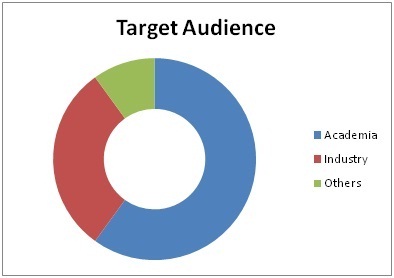
Glance at Market of Regenerative Medicine and Tissue Engineering:
There are strong pricing pressures from public healthcare payers globally as Governments try to reduce budget deficits. Regenerative medicine could potentially save public health bodies money by reducing the need for long-term care and reducing associated disorders, with potential benefits for the world economy as a whole. The global market for tissue engineering and regeneration products reached $55.9 billion in 2010, is expected to reach $59.8 billion by 2011, and will further grow to $89.7 billion by 2016 at a compounded annual growth rate (CAGR) of 8.4%. It grows to $135 billion to 2024.

Conference Highlights
- Organ & Tissue Transplantation
- Translational Medicine
- Bone and Cartilage Tissue Engineering
- Regenerative Medicine
- Scaffolds for Tissue Engineering
- Tissue Repair and Regeneration
- Tissue Science & Engineering
- Rejuvenation- Fight Aging
- Cancer Therapy
- Cell and Organ Regeneration
- Tissue Culture & Preservation
- Stem Cell Therapy
- Biobanking
- Immunotherapy
- Ethical and Legal Issues
- Market Analysis
- Cell Engineering
- Advances in Stem Cell
- Biomaterials and Bioengineering
- Cell & Gene Therapy
To share your views and research, please click here to register for the Conference.
To Collaborate Scientific Professionals around the World
| Conference Date | September 11-12, 2017 | ||
| Sponsors & Exhibitors |
|
||
| Speaker Opportunity Closed | Day 1 | Day 2 | |
| Poster Opportunity Closed | Click Here to View | ||
Useful Links
Special Issues
All accepted abstracts will be published in respective Our International Journals.
- Journal of Tissue Science & Engineering
- Journal of Stem Cell Research & Therapy
- Journal of Transplantation Technologies & Research
Abstracts will be provided with Digital Object Identifier by









